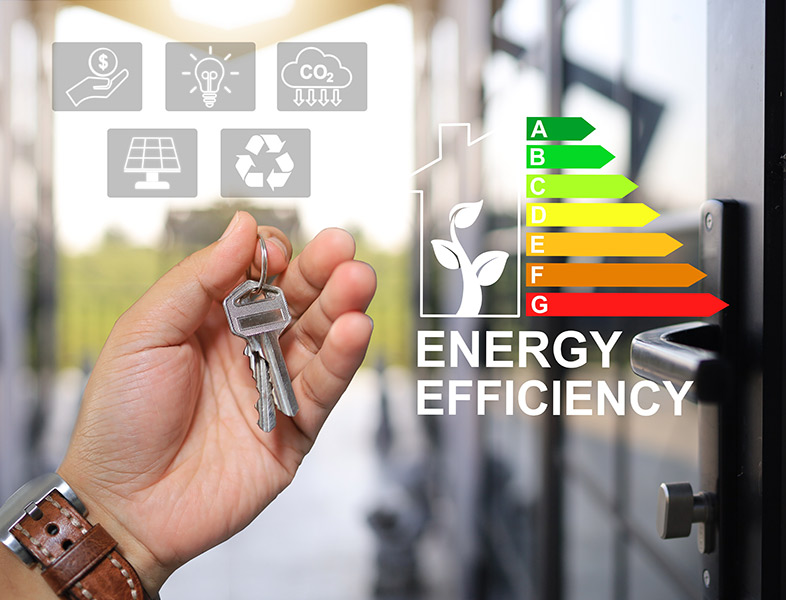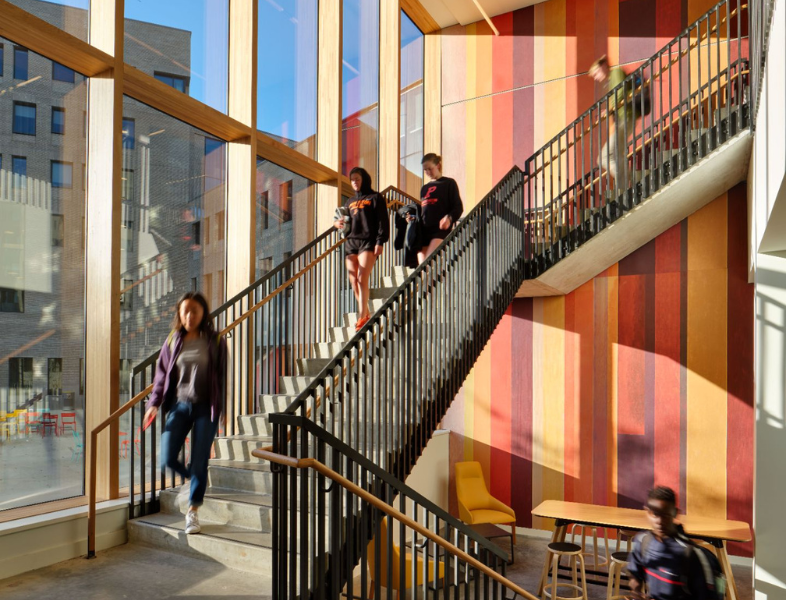Planning to incorporate a timber curtain wall into your next project, but unsure whether glulam or LVL is the better choice?
Selecting the right type of mass timber is essential to achieving high performance, design flexibility, and long-term durability—whether your project is institutional, commercial, or residential.
So what’s the difference between glulam vs. LVL timber? We’ll explore that, and more, in this blog post.
What is Mass Timber?
Before comparing LVL and glulam, it’s important to understand what mass timber is—and why it’s increasingly used in curtain wall construction. It is engineered wood fabricated into large pieces possessing greater structural strength, improved dimensional stability (less warping/shrinking due to environmental conditions) and tougher fire resistance over regular wood. Additionally, its prefabricated nature makes it easier and faster to install on the job site (as opposed to cutting wood on site).
But mass timber is not homogenous. It includes several variants – from glue-laminated (glulam) and cross-laminated timber (CLT), to laminated veneer lumber (LVL), nail-laminated timber (NLT), and dowel-laminated timber (DLT).
Two of the most popular types of mass timber are glulam and LVL.
What is Glulam Timber?
Glulam (glued laminated timber) is a mass timber product made from bonded layers of solid wood and moisture-resistant adhesives, with the wood grain aligned parallel to maximize strength and structural integrity. Like other types of mass timber, it offers high strength, durability, and design flexibility, and is often considered the best-looking of all the mass timber variants because of its visible grains, natural wood character, and refined finishes.
Its structural performance and natural aesthetic makes it a very popular choice for modern timber architecture and exposed facades, such as curtain walls.
What is LVL Timber?
LVL is also an extremely popular building material made by bonding thin wood veneers with adhesive under heat and pressure. Like glulam, the veneers are aligned with the grain in the same direction for greater strength, load-bearing capacity, and dimensional stability. Because LVL is made from thin veneers pressed together into a homogenous panel, it has a more uniform appearance that lacks the visual character of natural wood grain.
While glulam and LVL are both very strong engineered wood products, LVL’s less aesthetically pleasing nature means it’s more commonly used for concealed mullions or internal supports where appearance is less critical, and is rarely used as an exposed architectural feature.
What’s Best For Curtain Walls: Glulam Or LVL?
Given LVL’s aesthetic limitations, it’s fairly obvious which material is generally considered best for a curtain wall: Glulam. But the benefits and drawbacks of each material go much deeper than the surface.
Here are some of the top benefits and drawbacks of each building material:
Glulam
Benefits
- Architectural appeal: Showcases natural wood grain, making it ideal for exposed elements.
- Custom shapes: Can be fabricated into curves and custom profiles while retaining its structural strength.
- Good for large spans: Excellent for wide or open façade applications while, again, retaining structural strength.
- Variety of wood species: Glulam is made from a wider variety of woods than LVL, including Douglas fir, pine, mahogany, sapele, red cedar, white oak, and maple.
- Moisture resistance: Excellent natural resistance when properly finished.
Drawbacks
- Higher cost: Can be more expensive than LVL due to its higher aesthetic qualities and better suitability for customized shapes.
- Lead times: Turnaround times can sometimes be extended when fabricating glulam into custom shapes.
- Requires surface protection: Its frequent use in exposed exterior applications means it usually requires UV and moisture protection to retain long-term durability.
LVL
Benefits
- High strength-to-weight ratio: LVL offers excellent structural performance, especially in linear applications.
- Consistency: Fewer defects from knots, splits, and grain inconsistencies thanks to its uniform nature.
- Cost-effective: Generally less expensive than glulam (but also far less versatile and visually appealing).
- Dimensional stability: While both types are considered extremely stable, LVL’s uniform nature and the fact that glulam is often fabricated into larger pieces means it is slightly less prone to warping, twisting, or shrinking.
Drawbacks
- Aesthetic limitations: Typically not used in exposed applications because of its utilitarian, relatively plain look.
- Limited design freedom: LVL is considered much more appropriate for linear applications, and can’t be curved or shaped easily.
- Surface finishing: Requires surface treatments such as UV and moisture protection if left exposed. Its rougher finish may also necessitate sanding and priming.
- Less choice: Because LVL isn’t usually used for its appearance, fewer wood species are available. It’s often made from Douglas fire, southern yellow pine, or poplar.
Unicel Architectural: Glulam timber curtain walls for maximum strength, versatility, and aesthetics
Unicel Architectural’s high-performance glulam curtain walls offer exceptional strength, design versatility, and a refined natural finish—making them ideal for projects that demand both aesthetics and durability. They have been used in dozens of institutional, commercial, and residential projects – from engineering, research, and residence buildings at universities and research facilities; to airport terminals; to recreation centers and even Montreal’s first-ever net-zero building.
As demand grows for sustainable and visually impactful architecture, mass timber curtain walls—especially those constructed from glulam—offer a compelling alternative to aluminum or steel-framed systems. Their ability to integrate structural support with natural beauty makes them a top choice for exposed façades and engineered wood facades alike.
Contact Unicel Architectural to learn more about how our timber products can help you make your architectural vision a reality.
| Feature | Glulam | LVL |
|---|---|---|
| Composition | Laminated layers of solid timber boards | Thin wood veneers bonded under heat and pressure |
| Appearance | Natural wood grain, visually attractive | Uniform, often concealed, less visually appealing |
| Strength | High strength, customizable beam profiles | Very strong, high dimensional stability |
| Aesthetic Use | Suitable for exposed structural applications | Typically hidden or clad |
| Manufacturing Flexibility | Can be curved and shaped | Limited to straight forms |
| Cost | Typically more expensive than LVL | More economical for structural use |
| Sustainability | Both are FSC/PEFC certifiable and eco-friendly | Same as glulam |
News and Updates
The latest from Unicel Architectural

What are Stretch Codes and Step Codes – and What New Energy Codes Have Come Online?
Innovation - Blog, Innovation
Glulam or LVL – A Guide to Timber Curtain Wall Materials
- Blog, Innovation

